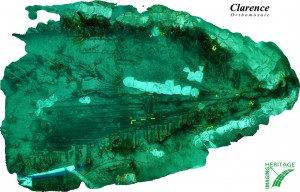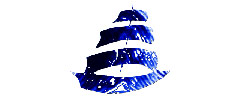3D Animations & Orthophotomosaics
Recent advances in accessibility of 3D imaging software has enabled photo runs and in situ artefact images taken during the excavation of Clarence to be post-processed in Agisoft Photoscan to create 3D photogrammetric models and orthophotographic mosaics.
3D Animations – full site
In November 2014 Kevin Edwards of 3DMAPPR (3D Maritime Archaeology Project – Perth Region) created several 3D animations of the Clarence site and excavation for the AHSPP. The resolution is such that the team should be able to use the images to gather additional measurements and better interpret the site. We are also working on testing these images against the data gathered on site and imported into the project’s GIS program Site Recorder4.
The 3D model of Clarence was created using a technique known as multi-image 3D photogrammetry. A sample of 391 legacy images taken with a 16MP Sony NEX5 during the 2012 field season were imported into the Agisoft Photoscan photogrammetry package, where they were automatically aligned and oriented using feature matching algorithms. From this, it was possible to extract geometric information that was used to reconstruct the wreck in the form of a dense point cloud, which was subsequently triangulated to create a ‘solid’ mesh comprising 5,050,228 faces and 2,528,417 vertices. The mesh was exported as a Wavefront OBJ object (*.obj) together with its respective texture file to generate digital media of the 3D model. The model was then imported into Blender (an open source modelling/animation package), where a very simple rig (comprising a single camera and light source) was used to generate a number of ‘virtual’ still images and animations. These models and animations can be viewed below.
AHSPP thanks Kevin Edwards for creating these images, models and animations.
https://youtu.be/gLuj9q9SKjA https://youtu.be/mF7tGOzJkt8
3D Animations of – Tierce casks
Kevin Edwards has created two 3D photogrammetric models of one of the tierce casks in situ on Clarence. The two models can be viewed below; one has been coloured with marine textures to enable a more authentic visualisation and enhance the interpretation of the artefact.
3D models – excavation trench






















